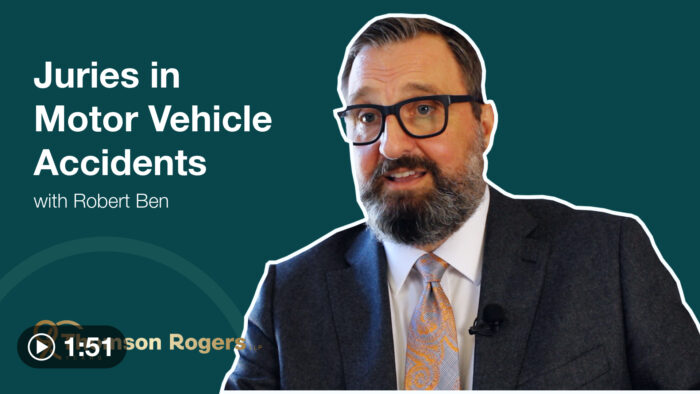COURT CONFIRMS ATTENDANT CARE MAY BE PROVIDED REMOTELY
Author(s): Robert M. Ben*
January 29, 2015
Many automobile accident victims who suffer a traumatic brain injury will have impaired judgment and poor impulse control. They may have difficulty complying with their medications. They may even express suicidal thoughts. They often need cueing, prompting, monitoring and/or supervision to ensure their personal safety. Some will require constant, direct and one-on-one attendant care. Others may not require continuous or direct monitoring but will nonetheless need some indirect support. Increasingly, this may take the form of periodic “checking in” by telephone, text or email message.
The appropriateness of this type of indirect or remote attendant care has long been acknowledged by the Ontario Society of Occupational Therapists (“OSOT”). In its publication Assessment of Attendant Care Needs, Form 1: A Resource for Reflective Practice, OSOT specifically addresses the role of phones and other electronic devices as attendant care tools:
The provision of cueing for clients with cognitive limitations can occur through direct stand-by methods or through the use of indirect methods. For example, indirect methods may include the client’s contact to his/her attendant via such communication aids as phone contact, Blackberry contact, personal emergency monitoring service/device, etc. It is important that the occupational therapist understand the frequency, reason and predictability of the client’s need to contact an attendant.
Despite OSOT’s acknowledgement that attendant care can be provided remotely, there has been no authoritative jurisprudence on the subject until the recent decision of the Ontario Superior Court of Justice in the case of Shawnoo v. Certas Direct Insurance Company, 2014 ONSC 7014.
In Shawnoo a brain-injured young woman named Misty struggled with medication compliance and overdoses, suicidal ideation, poor decision-making and judgment, and impaired impulse control. She relied heavily on her cell phone to establish alarms and reminders for medications and appointments, and to stay in contact with her attendants. She was assessed as requiring 24-hour attendant care to ensure her personal safety, which her family provided. Misty’s doctor indicated that her need for monitoring and supervision could be met by her family “checking in” through telephone calls, texting, emails and FaceTime.
Unfortunately, Misty’s insurance company refused to pay attendant care benefits, taking the position that attendant care services are not “provided” unless the attendant is physically present. When the question came before the court, the judge decisively dismissed the insurance company’s argument. According to the judge, nothing in the legislation prohibits attendant care services from being “provided” from a distance via electronic means and devices rather than in person, at least insofar as supervisory “custodial care” due to changes where an injured person’s behaviour is concerned.
The judge pointed to the proliferation of cell phones, texting and Skype in society today as effective means of communication and noted that, where cognitive or behavioural impairments are at issue, an attendant may be required to cue, remind or prompt a person to perform certain activities, such as attending appointments or other activities that the person would not partake of on their own. The judge noted that for the purposes of interpreting the meaning of “custodial care” the focus is on whether providing such care is protective of the person and allows the care provider to look after the person. The judge went on to say, “I am not convinced that such care requires the provider to stand over the person or be within their immediate physical presence.”
The Shawnoo decision is clear and welcome authority for the appropriateness of remote attendant care services in the appropriate case. Remote attendant care will be appropriate where there is evidence that supervision is required because of accident-related behavioural issues, the injured person relies heavily on her cell phone or other electronic devices for communication, reminder and alarm purposes, and a treating professional recommends supervision and monitoring through “checking-in” via remote means.
Share this






